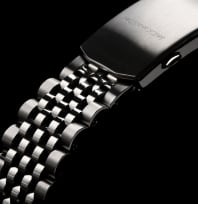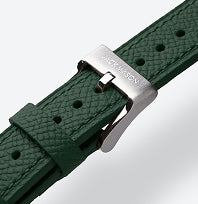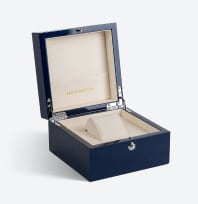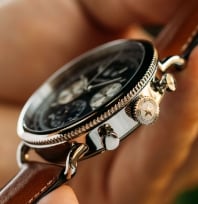In our fast-paced world, time moves quickly—and so many of us run to keep up with the latest fashion trends when it comes to clothing and accessories. Watches are no exception; all the best modern watchmakers compete to offer their clientele the latest in technological advancements and contemporary styles.
But while countless people reach toward the future, many of us harken back to the past, when life was simpler and days were less hectic. For today’s watch enthusiast who longs for those simple days of yore, the answer to our troubles—and our timekeeping needs—is the pocket watch.
Why should someone carry around a watch in their pocket when modern watches are so convenient—riding our wrists and enabling us to check the time at a moment’s notice? There are many reasons why people these days are opting for pocket watches, and you don’t need to live in the 19th century to understand the benefits of these portable time-keeping devices.
If you’re wondering whether a pocket watch is right for you, or just looking for someone to assure you that it’s okay to carry one, we’re here to help. Read on for the reasons why you should—nay, must—own an antique pocket watch.
History Of The Pocket Watch
Pocket watches have been around since the late 1400s when technological advancements in mechanical engineering made it possible to miniaturize clocks. Up until then, clockmakers had relied on swinging weights in order to power the inner mechanisms of their clocks—but with the invention of the mainspring, they were able to make small portable timepieces.
Locksmith Peter Henlein crafted the first spring-driven clocks, and is credited with inventing the portable timepiece (or watch, as we know it today). These tiny clocks were designed to be carried by hand, and were circular or oval in shape, and were originally called “Nuremberg eggs”—partly due to their shape and partly due to a mistranslation of the German word “Ueurlein” (little clocks) for “Eierlein” (little eggs).
While fascinating and desirable, these first watches were unreliable and inaccurate due to a number of reasons:
- Henlein’s little clocks originally featured only an hour hand, unlike today’s watches, some of which are able to tell time to the millisecond.
- Moving the device would impair their ability to keep accurate time (so much for portability).
- The tension in the mainspring was greater when fully wound than when it was almost run down, making the clock run faster when wound and slower as time went on.
The problem with mainspring tension would later be studied by Jacob Zech, a Swiss mechanic living in Prague. Around 1525, Zech developed a cone-shaped pulley known as a fusee. Along with a barrel, the fusee helped to house the mainspring and progressively increase its leverage as it ran down. This improvement made watches much more accurate than Henlein’s early devices and would pave the way for centuries of watchmakers to add improvements of their own.
The Pocket Watch in America
Pocket watches were widely considered luxury items until the middle of the 19th century, when American-made pocket watches started to be mass-produced. There were still different classes of pocket watch, with the less expensive, lower-quality models made for sailors and other working-class people.
By the 1860s, American watchmakers were at the forefront of the industry. With the development of new machinery, leading watch manufacturer Waltham designed the Model 57—a watch composed of interchangeable parts that brought down the cost of manufacturing the devices. As a result, the company produced over 50,000 watches every year—and while they were machine-made, Waltham watches were still superior to most handmade timepieces.
The Railroad And The Watch
With the development of the railroad, pocket watches became the standard—allowing trains across the country to run safely and efficiently. This was due in large part to a world-famous train wreck that took place outside of Kipton, Ohio, on April 19, 1891. The wreck was blamed on one engineer’s watch, which had stopped running for four minutes, leading to a disastrous asynchronization between the two trains.
After the accident, Chief Time Inspector Webb C. Ball declared that watches used by railroad personnel had to meet strict Railroad Chronometer standards. In addition to several specific required inner mechanisms:
- Watches had to be open-faced
- They needed to be size 16 or 18
- They needed a minimum of 17 jewels that were adjusted to at least five positions
- They had to be adjusted to temperatures of 34-100 degrees Fahrenheit
Keeping Watch In The Trenches
While pocket watches were wildly popular throughout the 19th century, they started to lose their appeal after WWI when the wristwatch came into fashion. Originally called the “trench watch,” the wristwatch was developed to help soldiers keep an eye on the time without putting down their weapons and to make it easier to hold onto their timepieces. It was much easier to lose a pocket watch on the battlefield than a watch attached to their wrists.
The wristwatch has been the standard watch since then, but there’s recently been a resurgence of pocket watch enthusiasts. Some people want to make a bold and nostalgic fashion statement, and others just like the way that that pocket watches look and feel.
The Three Styles Of Pocket Watch
Pocket watches come in a variety of different styles. Some fully enclose the timepiece, so you must open the case in order to check the time, while others allow you to see the time without having to do anything other than taking the watch out of your pocket.
Full Hunter
The traditional pocket watch style, the Full Hunter, features a spring-loaded outer casing, often ornately engraved with decorations or initials. To see the watch’s face, you pop the case open like a locket.
Half Hunter
Unlike the Full Hunter, the Half Hunter’s clock face is visible through a glass or crystal window in the case—you don’t need to open the case to check the time.
Double Hunter
Arguably the fanciest of the three styles, the Double Hunter has many of the same features as a full hunter, with one addition: a lid that opens on the back of the watch, designed so that you can see the inner workings of the timepiece.
An added bonus of the Double Hunter is that the two hinged lids allow the watch to stand on its own, in case you want to take it out of your pocket and display it on your desk or another surface.
Ways of Wearing Pocket Watches
As any wristwatch wearer knows, there are only so many ways to sport a watch on their wrist: you can place it on your right wrist or your left, and you can keep the face of the watch facing out or in. There’s nobody keeping you from placing your wristwatch on your ankle, but you may get some funny looks when you check the time.
In contrast, there are many ways of wearing a pocket watch that can add to the stylishness of ensembles, both formal and casual. Similarly to the way that different tie knots and pocket square folds can add an element of flair to an otherwise basic suit, the way that a person wears their pocket watch can add a level of depth to their outfit that cannot be obtained with a standard wristwatch.
The chain attached to the timekeeping device allows for many options when it comes to displaying your pocket watch. Here are just a few:
Single Albert
The most commonly used way to wear a pocket watch today, the Single Albert doesn’t require a pendant or a fob (a decoration on the end of the chain opposite the watch). Using this method, the watch goes into the vest pocket, and the other end of the chain gets attached to the middle button of the vest.
Double Albert
A little fancier than the Single Albert, the Double Albert displays the chain in a showier fashion. Place the watch in one vest pocket, and place the other end of the chain into the opposite pocket, resting the center of the chain on the middle vest button.
Single Albert With A Drop
Place the watch in a vest pocket, wrap the chain around the middle button, and leave the pendant or fob dangling from the button. This was popularized by Prince Albert—leading to the nickname for…a very different, far less formal use of a fob.
Fob Drop
A simpler way of wearing the pocket watch while displaying the pendant on the other end of the chain, you simply put the watch in your vest pocket and leave the end of the chain dangling outside of the pocket.
Modern and Casual
If you want to carry a pocket watch in the absence of a three-piece suit, worry not—there are plenty of ways to add a portable timepiece to your contemporary casual ensemble. Here are a couple of ideas:
- Clip the chain to a belt loop and place the watch in a pants pocket.
- Forgo the classic chain and wear the watch as a necklace to pay homage to ladies of the 1880s, who, not having functional pockets, often wore small watches from their necks.
In Conclusion
The pocket watch is undoubtedly a bold fashion statement in today’s forward-thinking world. Carrying one indicates that you’re a person who enjoys a little stylish nostalgia—and that you don’t mind standing out from the crowd. While it may seem old-fashioned to some, the pocket watch is a part of our history as both watch enthusiasts and human beings, and they’re not going anywhere. Pocket watches are elegant, fashionable, and a cool way to pay homage to the past while time keeps ticking toward the future.
So if you find yourself asking, “why should I carry a pocket watch?” maybe you should instead ask, “why shouldn’t I?”
Sources
Peter Henlein | Encyclopedia.com
The Pocket Watch Primer | Gentleman's Gazette
How to Wear a Pocket Watch: 14 Steps (with Pictures) | Wiki How









